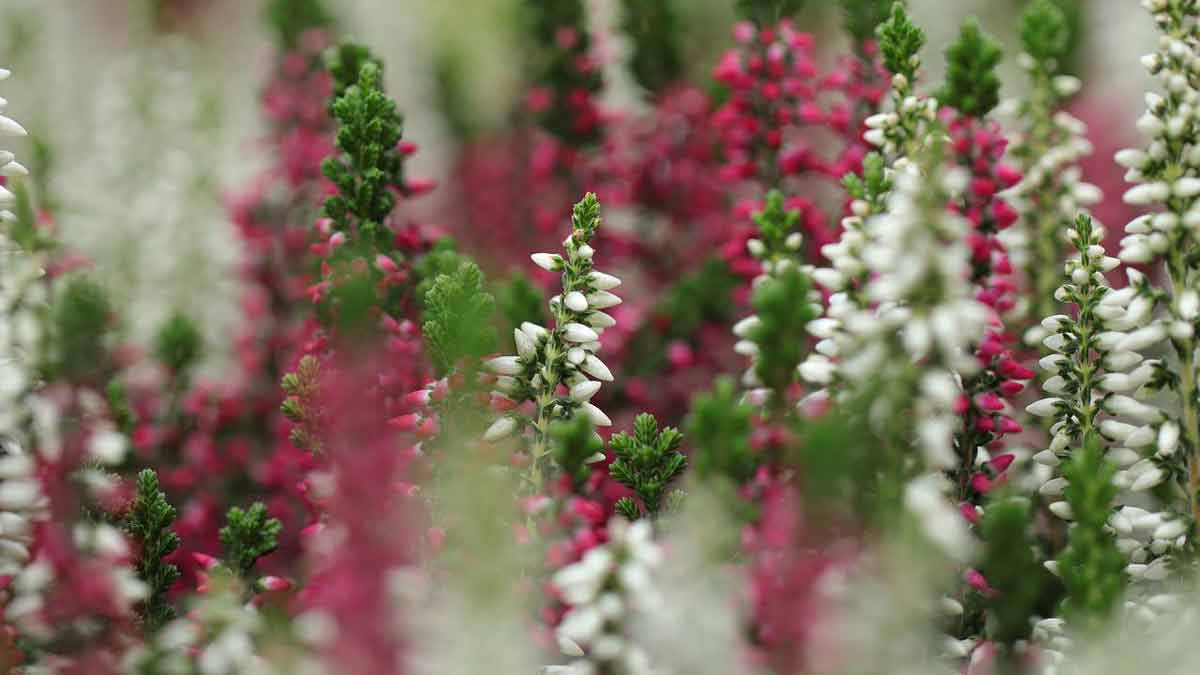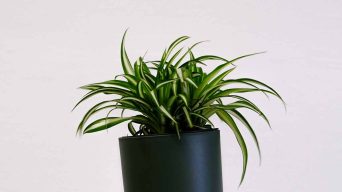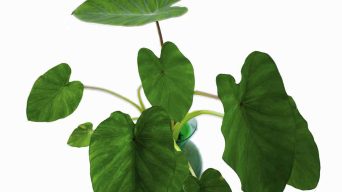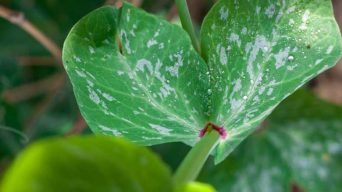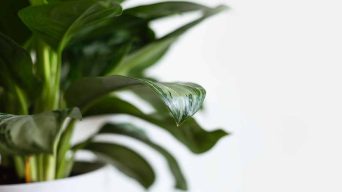To revive a dying heather plant, assess the cause. Overwatering, underwatering, inadequate sunlight, and poor drainage are common culprits. Pests and diseases can harm them too. Once you identify the issue, adjust watering, light, or soil conditions, treat pests, or address diseases for revival.
Heather plants (Calluna vulgaris) are versatile and popular flowering plants that come in many different colors and sizes.
It’s a low-maintenance plant that can thrive in both sun and shade, making it a perfect choice for beginner gardeners.
Unfortunately, even the hardiest plants can sometimes succumb to disease or pests.
If your heather plant is looking unhealthy, don’t despair!
You can revive it back to good health with a little effort.
Why Is My Heather Plant Dying?
There are several reasons why your heather plant might be dying.
Identifying the cause is the first step to reviving it.
Here are some common causes of a dying heather plant and what you can do to fix them:
1. Overwatering
One of the most common reasons for a dying heather plant is overwatering.
Heather plants are drought-tolerant and only need to be watered once a week unless there has been a prolonged period of dry weather.
Watering more than once a week can cause the roots to rot, leading to a dying plant.
When a heather plant is overwatered, the plant won’t be able to take up enough oxygen, and the roots will start to die.
How To Tell If You’re Overwatering Your Heather Plant
If you think you might be overwatering your heather plant, there are a few signs you can look for:
- The leaves of the plant will start to turn yellow or brown.
- The stems will be weak and spindly
- The plant will wilt even when the soil is moist
- There will be a fungus growing on the plant or in the soil
- Brown spots will appear on the leaves
If you see any of these signs, cutting back on watering and giving your plant a chance to dry out is essential.
How To Fix an Overwatered Heather Plant
If your heather plant is already showing signs of overwatering, the first thing you need to do is cut back on watering.
Allow the soil to dry out completely before watering again.
You also might need to repot your plant in fresh, dry soil.
Check to need to make sure your plant is in a well-draining pot.
If the pot doesn’t have drainage holes, the roots will continue to sit in water and eventually rot.
If the roots are already rotting, you’ll need to trim away the dead roots and repot the plant in fresh soil.
2. Underwatering
While overwatering is a common problem, underwatering is also a common cause of a dying heather plant.
Heather plants are drought-tolerant, but they still need some water to survive.
If the plant doesn’t get enough water, the leaves will start to turn brown and drop off.
The stems will also be weak and spindly.
How To Tell If You’re Underwatering Your Heather Plant
There are a few signs that you can look for to see if you’re underwatering your heather plant:
- The plant leaves will start to turn brown and drop off
- The stems will be weak and spindly
- The plant will wilt even when the soil is moist
- The plant will begin to produce fewer flowers
- The leaves will be small and stunted
If you see any of these signs, increasing the amount of water you’re giving your plant is essential.
How To Fix an Underwatered Heather Plant
If your heather plant shows signs of underwatering, you first need to increase the amount of water you’re giving it.
Water your plant deeply weekly, ensuring the soil is moist but not soggy.
Water it in the morning, so the leaves have a chance to dry out before nightfall.
Only water your plant when the soil is dry.
If you water it too often, the roots will start to rot.
3. Not Enough Sunlight
Heather plants need full sun to partial shade to thrive.
If the plant isn’t getting enough sunlight, it will produce fewer flowers, and the leaves will turn yellow.
The stems will also be weak and spindly.
How To Tell If Your Heather Plant Isn’t Getting Enough Sunlight
There are a few signs that you can look for to see if your heather plant isn’t getting enough sunlight:
- The leaves are yellow
- The leaves are drooping
- The stems are weak and spindly
- There are fewer flowers than usual
- The plant is overall small and stunted
If you see any of these signs, increasing the amount of sunlight your plant is getting is essential.
How To Fix a Heather Plant That Isn’t Getting Enough Sunlight
If your heather plant isn’t getting enough sunlight, you first need to move it to a sunnier spot.
Heather plants need full sun to partial shade to thrive, so ensure it’s in an area that gets at least six hours of sunlight a day.
An east- or west-facing window is a good spot for a heather plant.
If you can’t move your plant to a sunnier spot, you can also try using grow lights.
4. Too Much Sunlight
While heather plants need sunlight to thrive, too much sunlight can be just as harmful as too little.
If your plant is getting too much sunlight, the leaves will get damaged and start to turn brown.
The stems will also be weak and spindly.
How To Tell If Your Heather Plant Is Getting Too Much Sunlight
There are a few signs that you can look for to see if your heather plant is getting too much direct sunlight:
- The leaves are brown or burnt-looking
- The leaves are wrinkled and crispy
- The leaves start to fall off
- The stems are weak and spindly
- The plant is overall small and stunted
If you see any of these signs, you must decrease the amount of direct sunlight your plant is getting.
How To Fix a Heather Plant That’s Getting Too Much Sunlight
If your heather plant is getting too much sunlight, you first need to move it to a shadier spot.
Heather plants need full sun to partial shade to thrive, so ensure it’s in an area that gets no more than six hours of sunlight a day.
An east- or west-facing window is a good spot for a heather plant.
If you can’t move your plant to a shadier spot, try using a sheer curtain or blind to filter the light.
5. Poor Drainage
Heather plants need well-drained soil to thrive.
If the soil doesn’t drain properly, the roots will start to rot, and the plant will wilt.
The leaves will also turn yellow and fall off.
How To Tell If Your Heather Plant Has Poor Drainage
There are a few signs that you can look for to see if your heather plant has poor drainage:
- The soil is always soggy or wet
- The roots are starting to rot
- The plant is wilting
- The leaves are turning yellow and falling off
If you see any of these signs, it’s essential to improve the soil’s drainage.
How To Fix a Heather Plant With Poor Drainage
If your heather plant has poor drainage, you must first improve the soil’s drainage.
The best way to do this is to add sand or grit to the soil.
You can also try planting your heather in a raised bed or pot with drainage holes.
You can drill some if your pot doesn’t have drainage holes.
6. Nutrient Deficiency
Heather plants need a certain amount of nutrients to thrive.
If the soil lacks nutrients, the plant will start to yellow, and the leaves will fall off.
The stems will also be weak and spindly.
How To Tell If Your Heather Plant Is Deficient in Nutrients
There are a few signs that you can look for to see if your heather plant is deficient in nutrients:
- Yellowing leaves
- Leaves falling off
- Weak, spindly stems
- Small, stunted plant
If you see any of these signs, it’s important to fertilize the soil.
How To Fix a Heather Plant With a Nutrient Deficiency
If your heather plant is deficient in nutrients, you first need to fertilize the soil.
You can use any fertilizer, but it’s best to use an organic fertilizer.
You can also try adding some organic matter or peat moss to the soil.
7. Hot, Dry Conditions
Heather plants are native to cooler climates and can’t tolerate warm weather.
Heather plants need cool, moist conditions to thrive.
They thrive in temperatures between 60 and 70 degrees Fahrenheit.
The leaves will turn brown and fall off if the temperature gets too hot.
The stems will also be weak and spindly.
How To Tell If Your Heather Plant Is Getting Too Hot
There are a few signs that you can look for to see if your heather plant is getting too hot:
- The leaves are yellow and falling off
- Leaf edges are brown and crispy
- The stems are weak and spindly
- The plant is wilting
Moving your plant to a cooler spot is essential if you see any of these signs.
How To Fix a Heather Plant That’s Getting Too Hot
If your heather plant is getting too hot, you must move it to a cooler spot.
Heather plants need temperatures between 60 and 70 degrees Fahrenheit to thrive, so make sure it’s in a cool, shaded spot.
You can place a fan near the plant to help cool it down.
You can also increase the humidity around the plant by misting it with water or placing the plant on a pebble tray.
8. Root-Bound
Heather plants need room to grow.
If the roots are too crowded, they won’t be able to get the nutrients they need, and the plant will start to die.
The leaves will turn yellow and fall off, and the plant will eventually wilt and die.
How To Tell If Your Heather Plant Is Root-Bound
There are a few signs that you can look for to see if your heather plant is root-bound:
- The roots are growing out of the bottom of the pot
- The plant is wilting, even when it’s watered
- The leaves are yellow and falling off
- The leaves are curling
If you see any of these signs, it’s essential to repot your heather plant.
How To Fix a Heather Plant That’s Root-Bound
If your heather plant is root-bound, the first thing you need to do is repot it.
Choose a pot two or three inches wider than the current pot.
Fill the new pot with fresh, well-draining potting mix.
Carefully remove the plant from the old pot and loosen the roots before placing it in the new pot.
You may need to trim the roots if they’re too long.
9. Overfertilization
Heather plants need a certain amount of nutrients to thrive.
If you fertilize the soil too much, the plant will start to die.
When the soil is overfertilized, the roots can’t get the nutrients they need, and the plant will start to yellow and die.
How To Tell If Your Heather Plant Is Overfertilized
There are a few signs that you can look for to see if your heather plant is overfertilized:
- The leaves are yellow and falling off
- Brown leaf tips or edges
- The plant is wilting
- Stunted growth
If you see any of these signs, it’s essential to flush the soil
How To Fix a Heather Plant That’s Overfertilized
If your heather plant is overfertilized, the first thing you need to do is flush the soil.
To do this, water the plant thoroughly and let the water drain out completely.
Do this once a week for three weeks.
This will help to remove the excess fertilizer from the soil
You can also add some fresh, well-draining potting mix to the pot.
10. Pests
Pests can cause a lot of damage to heather plants.
Common pests include scale insects and spider mites.
These pests suck the sap from the plant, weakening and killing it.
Pests can also spread diseases to the plant.
How To Tell If Your Heather Plant Has Pests
There are a few signs that you can look for to see if your heather plant has pests:
- The leaves are yellow and falling off
- The leaves are covered in webbing
- The plant growth is stunted
- The plant is wilting
If you see any of these signs, treating the plant for pests is essential.
How To Fix a Heather Plant That Has Pests
If your heather plant has pests, the first thing you need to do is remove the pests from the plant.
You can do this by hand or with a hose.
To remove pests with a hose, direct a strong stream of water at the pests.
This will knock them off of the plant.
You can also use a natural insecticide such as neem oil.
To use neem oil, mix it with water according to the instructions on the bottle.
Then, spray it on the plant, being sure to coat the undersides of the leaves.
11. Diseases
Diseases can also cause a lot of damage to heather plants.
Common diseases include root rot and powdery mildew.
Root rot is caused by a fungus attacking the plant’s roots.
This can cause the plant to wilt and die.
Powdery mildew is caused by a fungus that grows on the plant’s leaves.
This can cause the leaves to become covered in white powder.
How To Tell If Your Heather Plant Has a Disease
There are a few signs that you can look for to see if your heather plant has a disease:
- The leaves are yellow and falling off
- The leaves are covered in powder
- The plant is wilting
- Brown or black spots on the leaves
- The stems are soft and mushy
If you see any of these signs, treating the plant for diseases is essential.
How To Fix a Heather Plant That Has a Disease
If your heather plant has a disease, the first thing you need to do is remove the affected leaves.
Check the roots of the plant to see if they’re rotten.
If they are, you’ll need to trim them before replanting the plant.
You can also treat the plant with a natural fungicide such as neem oil.
This will help to kill the fungus and prevent it from spreading.
Final Thoughts
Heather plants (Calluna vulgaris) are beautiful, low-maintenance plants that can add a lot of color to your garden.
However, they can sometimes die for no apparent reason.
If your heather plant is dying, it’s essential to figure out the cause so you can fix it.
The most common causes of death in heather plants are incorrect watering, too much or too little sunlight, and poor drainage.
Pests and diseases can also cause a heather plant to die.
If you can identify the problem and take steps to fix it, you’ll be able to revive your heather plant.

